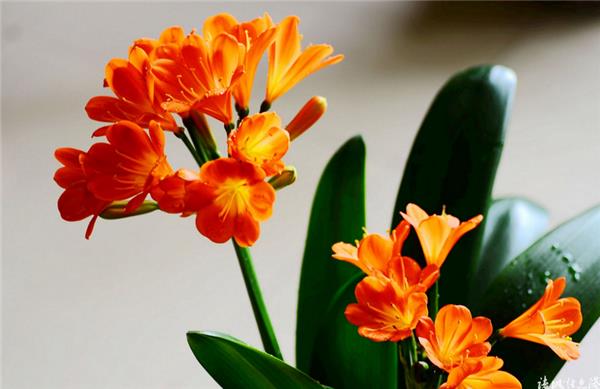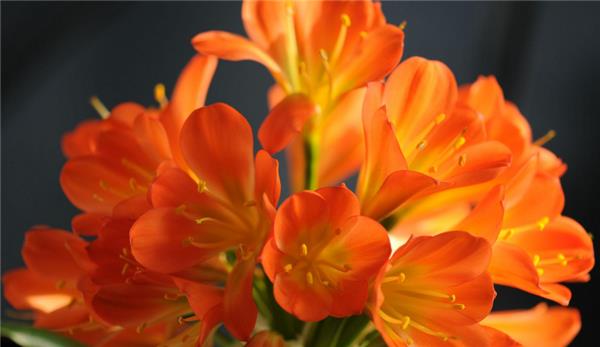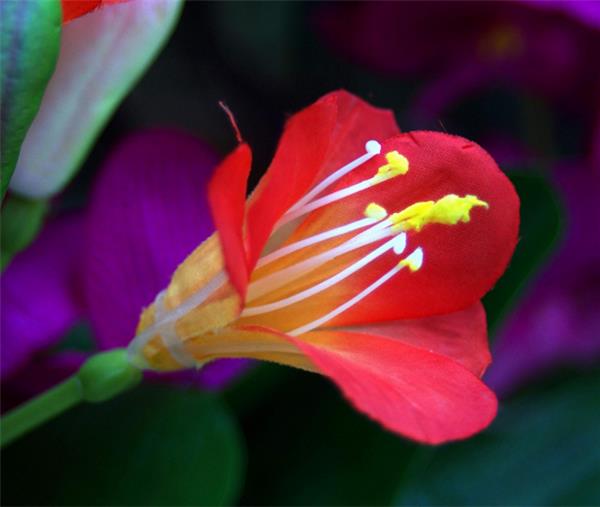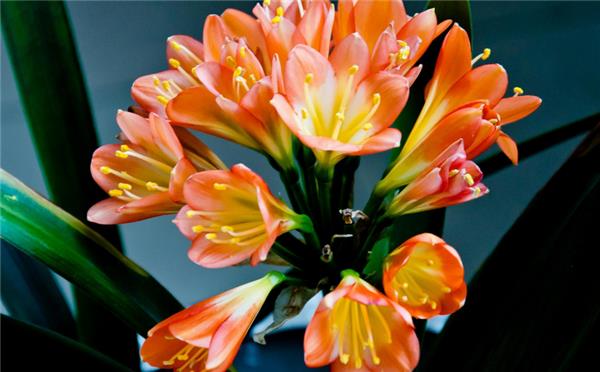The breeding and nursing methods of magnolia make your home smell full of flowers.
Some friends say that the orchid is not as delicate as it is said on the Internet, but some habits of the orchid must be clear. The gentleman orchid has strong negative resistance, likes the moist and cool environment, and is not cold-resistant or heat-resistant. The cultivation of magnolia in summer should prevent exposure to the sun. In winter, the cultivation of Cymbidium should be protected from freezing. When the temperature is below 10 degrees, the growth rate of Cymbidium will slow down. Last winter, when the temperature was not well controlled, it was obvious that Cymbidium almost stopped growing. When the temperature is 15-25 ℃, it is the most suitable temperature for the growth of Cymbidium.

1. Soil:
Fertile and loose neutral or weakly acidic rotten soil is the most suitable hotbed for magnolia. The choice of soil is the first key factor for magnolia, and it is also one of the reasons why many people can't raise it well.
a. The soil is screened and sterilized.
b. Stir-fry pockmarked seeds and mix well with the soil.
c. Add a layer of charcoal to the bottom of the basin to increase the air permeability and prevent stagnant water.
d. Add a handful of pockmarked seeds to the bottom of the basin as base fertilizer.

two。 Lighting:
Cymbidium likes semi-shade, so growing orchids indoors requires manual adjustment of the effect of light on it. The leaves of Cymbidium have phototaxis, and if they are placed indoors for a long time, the leaves must be deflected in the direction of the sun. As far as its plant shape is concerned, it is difficult to look sideways at a line and look squarely at the ornamental effect of opening a fan. Usually, during the day, you should put the flower plate in the sunny place to make the magnolia look good and have ornamental value. don't be lazy and change the direction to the sunny place of the leaves every other week, so that the magnolia can grow staggered. Because the leaves of Cymbidium are opposite, if the long-term light is too single, it will cause uneven. When the orchid is in bud, place the orchid in the sun at night to replenish the light.

3. Watering:
Gentleman orchid is a fleshy root, angry and afraid of water stains. In addition, the leaves of Cymbidium have a waxy layer, the temperature is low in winter, and the transpiration and evaporation of water are less. Therefore, watering should not be too much, only combined with fertilization watering, to keep the basin soil moist. The soil should not be too dry or too wet. Every time it is watered, it must be thoroughly watered, and some more should be watered after budding. Every 20 days or so, combine watering with fermented bean cake water, fresh fish water and horseshoe water to combine watering and fertilization. Watering should be controlled when the room temperature is low to prevent the basin soil from being too wet, which will cause the rotten roots of the plant to die, but it can not make the basin soil too dry.
4. Fertilization:
When the nourishment of the gentleman orchid is insufficient, there will be a variety of problems, such as narrow new leaves, light color and so on. In terms of nourishment, it is necessary to add the necessary nutrients to it in different seasons, and gentleman orchids generally apply fertilizer in winter. Phosphate fertilizer and potash fertilizer are more beneficial to the cultivation of Magnolia, and less nitrogen fertilizer is applied when topdressing. Be sure to control the amount of fertilization, ha, or it is easy to cause charred symptoms at the leaf tip of Cymbidium, especially in winter, if the leaves are spotted and the roots turn yellow, it is the reason for excessive fertilization. You can choose eggshell powder and stewed fish water, which are good organic phosphate fertilizers. Bran ash and tobacco ash can be used as potash fertilizer to fertilize magnolia. Three months before flowering, liquid fertilizer was applied mainly with phosphorus and potassium fertilizer to promote its arrows to blossom.
5. Heat preservation:
The suitable temperature for the growth of Cymbidium in winter is 15-20 ℃, and it is better not lower than 10 ℃. The temperature should be kept at about 18 ℃ after scurrying, and the temperature difference between day and night should be about 10 ℃, otherwise the flower arrow will blossom if it does not reach a proper height, and it is easy to form a "sandwiched arrow". The magnolia should be moved indoors when the outdoor temperature is lower than 10 ℃ at night. When the indoor temperature is lower than 10 ℃, in addition to covering the surface of the basin soil with a layer of charcoal powder 1 inch thick for heat preservation, the flowerpot should also be placed in the indoor sunny place. When the indoor temperature is very low, cover the film on the flowerpot to raise temperature, but the temperature in the cover should not exceed 25 ℃, if it exceeds, it should be ventilated and cooled in time.
6. Prolong the florescence:
The florescence of Magnolia is mostly from December to March of the following year. The way to prolong the flowering period is to place the flower in a dark place when it is about to bloom, properly control the watering, and keep the temperature at 8-12 ℃. In this way, the florescence can be extended by 10-20 days.

7. Leaf protector:
The leaves are short, wide, thick, green, bright and strong, which are the characteristics of healthy orchids. In addition to providing reasonable fertilizer and water, the leaf surface must be kept clean in order to improve photosynthetic efficiency. Wash the leaves regularly, rinse or wipe the dust off the leaves with the same water as the room temperature.
8. Time to change basin:
The time and times of toppling and changing soil of Cymbidium depends on the size and season of the seedlings. Like these grown-up orchids, they have to change their soil once a year. The best time to change soil is in spring and autumn, because the orchid grows vigorously at this time and will not affect the growth of the plant. Take out the magnolia from the basin, cut off the rotten roots and the old roots without absorptive capacity, and remove the waste soil. Spray trees inside and outside the leaves to protect trees from disinfection, sterilization, heat preservation and cold. After that, fill it with 2-5 cm thick nutritious soil, grab a handful of soil to add to the inside of the root, and then put the plant in the basin. When filling the nutritious soil into the basin to half the height of the basin, gently press down with your hand along the edge of the basin, so that the roots stand in the basin and are not easy to bend. The key point of soil replacement is to fill the roots with soil. Otherwise, there is no soil in the root, and the water and nutrients can not reach the root, which is easy to cause rotten root and arrow entrapment. After changing the nutritious soil, you can pour water through it.
The above is the breeding method of Magnolia. I hope I can help you.
Leaves must be kept clean to improve photosynthetic efficiency. Wash the leaves regularly, rinse or wipe the dust off the leaves with the same water as the room temperature.
8. Time to change basin:
The time and times of toppling and changing soil of Cymbidium depends on the size and season of the seedlings. Like these grown-up orchids, they have to change their soil once a year. The best time to change soil is in spring and autumn, because the orchid grows vigorously at this time and will not affect the growth of the plant. Take out the magnolia from the basin, cut off the rotten roots and the old roots without absorptive capacity, and remove the waste soil. Spray trees inside and outside the leaves to protect trees from disinfection, sterilization, heat preservation and cold. After that, fill it with 2-5 cm thick nutritious soil, grab a handful of soil to add to the inside of the root, and then put the plant in the basin. When filling the nutritious soil into the basin to half the height of the basin, gently press down with your hand along the edge of the basin, so that the roots stand in the basin and are not easy to bend. The key point of soil replacement is to fill the roots with soil. Otherwise, there is no soil in the root, and the water and nutrients can not reach the root, which is easy to cause rotten root and arrow entrapment. After changing the nutritious soil, you can pour water through it.
The above is the breeding method of Magnolia. I hope I can help you.
Related
- Wuhan Hospital Iron Tree Blooming Result Was Instantly Frightened by the Gardener Master
- Which variety of camellia is the most fragrant and best? Which one do you like best?
- What is the small blue coat, the breeding methods and matters needing attention of the succulent plant
- Dormancy time and maintenance management of succulent plants during dormancy
- Minas succulent how to raise, Minas succulent plant pictures
- What are the varieties of winter succulent plants
- How to raise succulent plants in twelve rolls? let's take a look at some experience of breeding twelve rolls.
- Attention should be paid to water control for succulent plants during dormant period (winter and summer)
- Watering experience of twelve rolls of succulent plants
- Techniques for fertilizing succulent plants. An article will let you know how to fertilize succulent plants.



